By Adam Viccaro
For most people, getting a “good sweat” is just a normal part of everyday life. Hot days don’t require much planning, and a workout can be done in nearly any conditions. Perhaps the only downsides are needing a change of clothes, shower, and deodorant to manage the extra smelliness that comes with our built-in cooling system. I’d even venture to say most people think of the negative aspects of sweating before the benefits.
As someone with hypohidrotic ectodermal dysplasia (HED) who can’t sweat, I envy the cooling benefits as I easily overheat, but I also smell wonderful all the time (or so I’m told), so that’s nice. I get a wide range of responses when I tell people I can’t sweat. Most don’t have much of a response, I think because “not sweating” isn’t a thing they’ve ever encountered. Perhaps they think, “Oh you just don’t sweat a lot”. Some people are curious, and will ask a question or two. Even fewer are really intrigued, and will ask a bunch of questions.
Feeling Lesser
When I was a kid, not sweating, along with other HED symptoms, made it clear to me that I was different. Being different isn’t a bad thing, but it does draw attention, and as most of you know, kids tend to not have a filter. Growing up people said things that didn’t just make me feel different—they made me feel lesser. Not only was I different, but I physically couldn’t do the things that other kids could do.
Thankfully, I was surrounded by a wonderfully supportive family, and eventually a group of friends who treated me the same as anyone else, and even celebrated my differences as positive things. My family encouraged me to always try new things, and they helped me overcome the challenges that came with my condition. They never let me accept that I was less capable than anyone else; I just had to figure out a way to adapt.
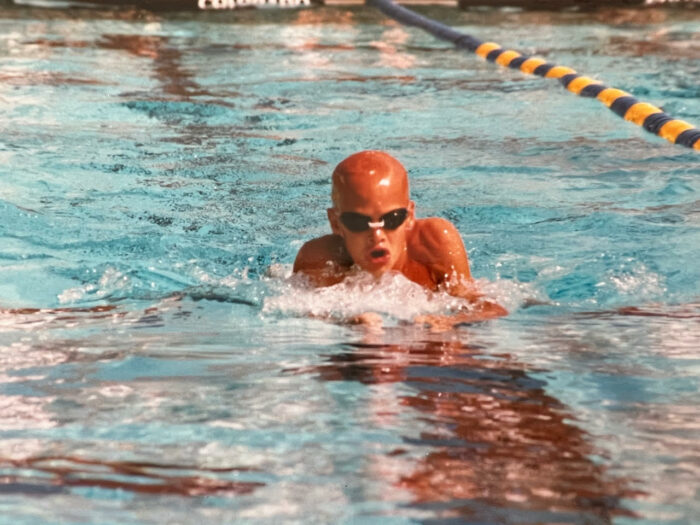
Over the many years since, I’ve adapted and learned what it takes to live a normal life despite my condition. I went on to compete at the national level in swimming, completed an Olympic distance triathlon in sunny San Diego, and even ran a full marathon—something I thought was never possible growing up. My dad is a runner, marathoner, and Ironman—like any young boy, I wanted to be like him.
Exploring Endurance Sports Outside of The Pool
It wasn’t until I was in my early 30s that I started to believe running a marathon was possible. My boss at the time was an ultra marathoner, and when I first met him, he had just completed the Badwater ultramarathon (100+ miles running through Death Valley, Cal. in 100+ degree heat). His training consisted of at least a 10-mile run every day. Something clicked with me after seeing the absurdity of his feats. I knew it was possible, I just had to figure out a way to get it done.
I moved to San Francisco shortly after that, and it was in the cool SF weather and fog that I started to push my running limits. One day, I decided I was going to run eight miles, pushing past the five-mile barrier that had stood strong my entire life. I had to walk a bit, especially with the steep SF hills, but I did it. That gave me the confidence I needed, and shortly after I signed up for the Rock n’ Roll half marathon and started training with my girlfriend, Ashleigh.
I learned so many things training for that race that I use every day now. I found socks and shoes that didn’t overheat my feet, one of my biggest issues. I learned the impact of hill training over long distances and how the effects of overheating compound with continued heat exposure. I learned how to wake up early to get my runs in before the sun made it too hot.
Adjusting to Race Day Conditions
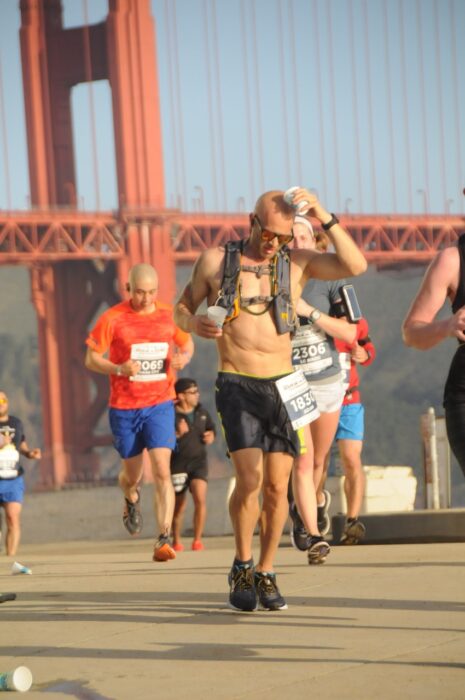
I also learned (the hard way) that you should never expect perfect conditions on race day. For that race, temperatures were in the high 40s to start, ending closer to 60 degrees. The San Francisco fog was also conspicuously absent that day, which wasn’t so bad on the first half since the sun was at my back, but on the second half, it was full sun in my face for more than an hour. Coupled with the hills and Golden Gate bridge, I was really struggling, going from an 8-minute-mile pace to 12-minute miles, stopping at every water station and medical tent I saw, attempting to cool off while also convincing the medical staff I was OK.
I finished the race, and even though Ashleigh beat me (still haven’t heard the end of that one—lol), I felt so proud to have completed the challenge and pushed my limits.
Using Cold-Weather Training to Better Prepare for the Heat
Fast forward a few years, and we’ve now moved across the country to North Carolina. Living in the South and experiencing all four seasons brought a new set of challenges and opportunities that I needed to adapt to. In the winter, I’m in my zone! During these colder months, I’ve been able to increase my running volume far beyond what I ever expected. Not sweating is a nonissue, for the most part, during the winter here, and the cold has allowed me to build an aerobic base that has made me more capable during the warmer months.
If there’s one thing I can recommend to people who can’t sweat but want to get in better shape, first do the hard work in an environment that makes not sweating a nonissue. You’ll discover your body’s true limits without overheating, and you’ll better prepare your body to handle the warmer days to come. This is how I was able to excel in swimming as a teenager—the water kept me cool and allowed me to push the limits of my body and mind without fear of overheating.
Running a Marathon Without Breaking a Sweat
I started training for my marathon in December 2020 and by late February, I felt ready and started looking for races. This was still somewhat early in the pandemic, so many races had been canceled. After searching and searching, I found one that seemed like a good race. It was a month away, had a flat course, and was a bit north of me in Washington D.C., so I thought even if it’s a warm spring, it’ll be cooler there.
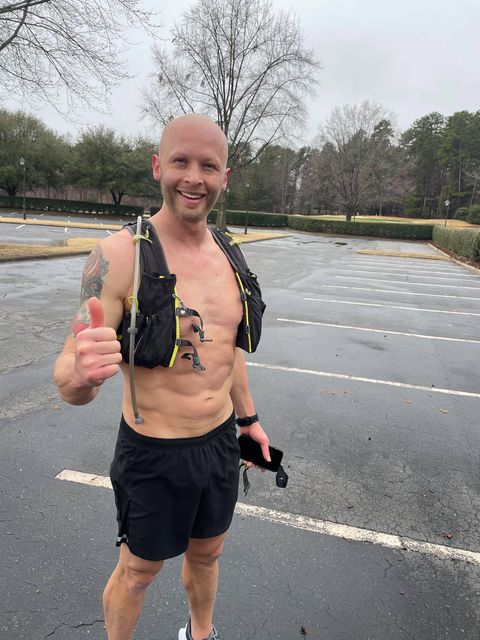
Fast forward to race day and the forecast called for temps in the high 30s at the start, climbing into the 50s by noon. There was a chance of cloud cover in the morning, but it was going to be full sun for most of the race. Not ideal, but race day conditions never are.
I woke up early on the day of the race, picked up my phone to check the weather and shockingly, the weather forecasters got it wrong. Starting temps were in the high 40s and there wasn’t a cloud in sight. I was in for a tough day.
I loaded my Nathan running pack with ice, energy gummies, and a few sticks of gum. I’m not sure if others have this issue, but when I work out, my mouth gets dry very quickly. I’ve found that chewing gum is the only way to avoid this.
Ready, Set, Go!
Ready to go, Ashleigh and I walked down to the start of the race. She wasn’t racing this time, which worked out well because I needed the extra support.
At the starting line, I started peeling layers off, embracing the cold for a few moments before the heat would start to build. Being the only person with their shirt off in the cold, I caught a few curious looks, which usually happens. I often run shirtless in the cold at home, which yields funny looks and comments, but you gotta do what you gotta do to stay cool! I’ve learned to care less what people think of me over the years, thankfully.
Bang! The gun went off and our small group headed out on the first of two laps on the out-and-back course—a beautiful, flat trail winding along the Potomac River. I hung back in the middle of the pack, running just over the 8-minute pace for the first six miles. I felt great; the temperature was a little cooler by the water, and I settled into my familiar pace.
Turning around at the first checkpoint, I started the second leg heading back towards the start of the race. The sun was rising, and after two more miles at my normal pace, it was hitting me square in the face. The wind was also now at my back, creating a pocket of dead air in front of me. I started to feel the heat.
The Rough Back Half
I started to back off a bit, but it was too late. Around mile 10 I started to really feel it, and I took a break to walk for a bit. My family was watching me live on my Garmin, so I texted them so they would know what’s going on. They texted back encouragement, and my mom reminded me it was OK to stop if I needed to—no need to be a hero! I appreciated the love, but I was determined. After walking for a minute and spraying cold water all over, I decided to push on, running a much slower pace this time, 10–11-minute miles.
Ashleigh was waiting for me at the start with a cooler of ice, so I took off my water pack and packed it full again. I told her it’s going to be a rough back half, and I’ll need more ice as the sun rises higher and the temps push deeper into the 50s. I lingered around for another minute or two, rubbed ice everywhere and stuffed every pocket of my pack with ice. She nudged me—enough, time to keep moving! I headed back out for another loop, fortunately with the sun at my back and a cool breeze on my face for the next six miles.
There were water stations every two miles, so I stopped, filled up my pack, and threw water on myself. This kept me cool for a minute or two, but then the heat built back up until I reached the next water station. I reached the end of the third leg and started the longest seven miles I’ve ever run.
The sun was high—strong and bearing down directly on my face. It felt like 80 degrees out, but it was still in the 50s. I ran, walked for a bit, reached a water station, ran, walked, repeat. I befriended a marine along the way who also seemed to be struggling. We pushed each other to keep going and eventually parted ways at one of my water stops. Only a few more miles to go.
My Strong Supporter
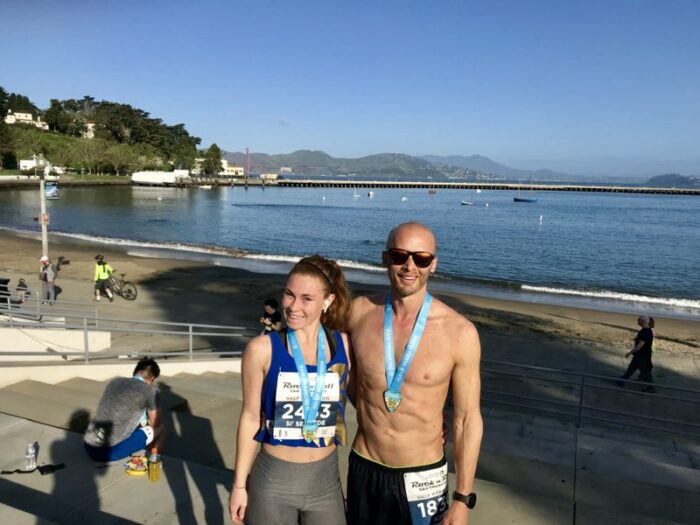
A little over a mile out, and I knew I was going to finish at this point but it was getting tough. I turned a corner to find Ashleigh waiting for me alongside the trail—she’d walked from the starting line carrying the cooler of ice and water. I loaded up one final time and kept moving towards the finish line. I can’t stress enough how much it means to have someone in your corner. She will go above and beyond to help me, but she also won’t let me quit. Having a strong woman by your side is a life hack! I feel so fortunate.
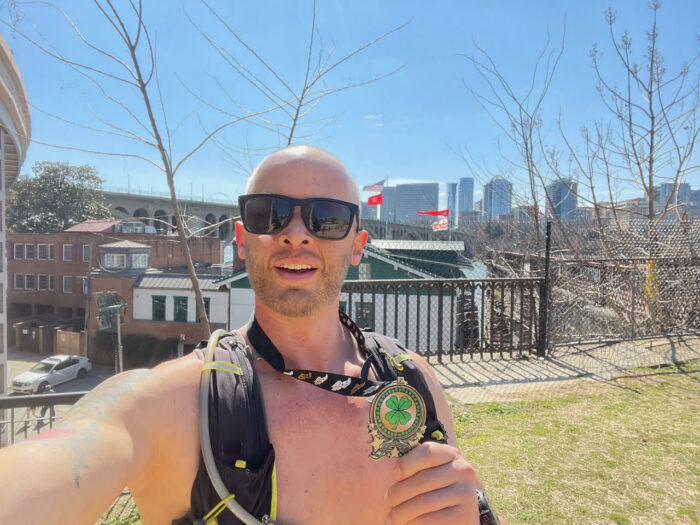
I was closing in on the finish line and tried to pick up the pace, but there was just nothing left in the tank. Finally, it was over! I did it. The thing I never thought I could do… I am a marathoner!
Don’t Let Anything Hold You Back
I hope my story inspires others to challenge themselves and to not let anything hold them back. Most of the time, when we think we can’t do something, it’s only our minds that have the power to stop us. Where there is a will, there is a way. I encourage anyone who feels like HED is holding them back to challenge that thinking and figure out a way to bring down those mental barriers. This is my framework for challenging myself—perhaps it can help you do the things you never thought you could.
Rule #1: Believe you can do anything.
The mind fails well before the body ever will. Conquer your mind first and believe you can do it.
Rule #2: Know your “heat limit” (or any limit) and learn how to increase it.
Know your limits and push them frequently. Your body can and will adapt.
Rule #3: Prepare for any condition.
Life is unpredictable. Know how different conditions affect you, and be ready for anything.
Rule #4: Avoid dangerous situations, and plan for the worst.
Safety first. When it comes to athletic pursuits, if you can’t sweat, you can get into serious trouble fast. Don’t be a hero and know what it looks like when you are in real trouble. Don’t be afraid to try again another day.
For more on my athletic pursuits, check out this blog by Road Runner sports.
Stay tuned for part two of Adam’s story, “Learning How to Adapt to a Sweat-free Life,” which will publish on May 2.
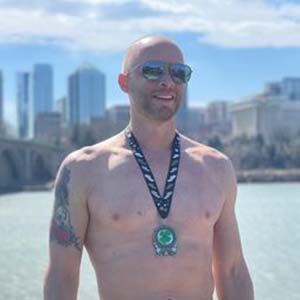
Thank you for this story of hope about Hypohydrotic Ectodermal Dysplasia.
This is a real health situation and some of my doctors do not believe in it. I suffer in summer like Adam, swim a lot, and use the cooling techniques.
Very inspiring as a parent of 2 hed kids
Congratulations Adam from another no sweat man. I joined our High School cross country running team in 1967, but I was terrible. I was a age group swimmer too, earned Jr College All-American in 5 event, which be get a scholarship to division one university. I loved your article and the positive comment about over coming the challenges of EDD.
This is a wonderful story Adam and Ashleigh. Congrats to you Adam for achieving something you’ve wanted to do for most of your life. From someone who doesn’t suffer from HED, but a marathoner & triathlete, I know what it takes to cross the finish line — digging deep and believing in yourself. You are an inspiration and should become a motivational speaker to others, especially kids. All of your rules pertain way beyond athleticism. Thank you for sharing your story. Hope to see you guys soon. xoxo
Thank you for sharing your inspirational story. I wanted to run the Boulder-Boulder on 2020 but Covid. Over the last couple years I cannot cool off and noticed I don’t sweat like “normal”. It is frustrating but I am determined to cross the finish line this year.
What an amazing and inspiring story Adam, thank you for sharing it. It’s challenging forus non sweaters to go participate in sports but you show us right here it can be done. I’ve never met another person who doesn’t sweat and so, I love the connection I feel getting this email.
I wonder if there’s a support group? Maybe Adam and those of us that commented could start it!